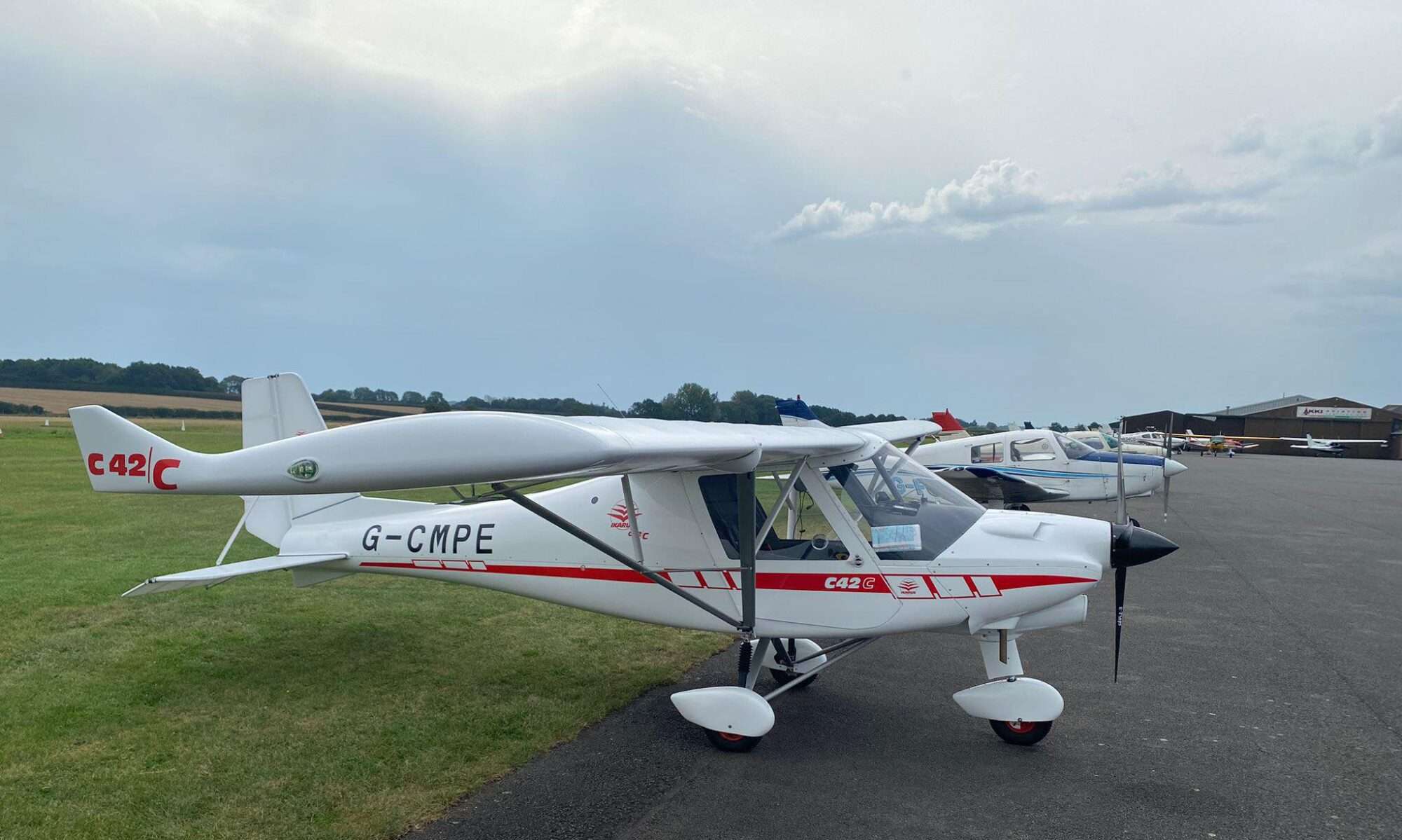Today Sunday the 11 Jan 2015 was triple first for me as it was my first flight in 2015, my first flight in a microlight over my home and my first flight using Skydemon to navigate!
On arriving at the club I met Alan who was just leaving and had not been able to fly, thus I thought this would be the fourth consecutive week the weather would stop me from flying too!
After the normal greetings etc. Mike ask what would I Like to do, normally I reply whatever you think I should be doing to work towards my GST, however today I had some new toys with me, over Christmas I had got a Garmin Glo satellite receiver and a Skydemon subscription, I had a little play with these at home, but not flown with them, so I asked Mike if we could fly using them and plot a route over my house and back, he agreed.
So the first task was to install the partly homemade iPad Mini 2 bracket. I’m using a homemade one as we have a Garmin satnav bracket in the aeroplane and I therefore needed to adapt a Garmin arm to take an iPad mini. This was made from a sheet of 3mm Perspex I had ordered and then cut to size and bent to shape using a heat gun, this was a lot easier then it may sound! An existing Garmin mount arm and ball and socket purchased online for around £5.00 the lot, some nuts, bolts and a circle of aluminium provided and assembled by a friend. The end result can be seen below.
The GPS mount was a universal phone suction mount that my son no longer uses, purchased online for around £3.00.


This post is not meant to be a review of Skydemon or the Garmin Glo, which I plan to do later, once I have got to know them better, however I will give my first impression of them both.
First Mike showed me how to remove the inadvertent waypoints I had added which was simply a case of dragging them to the next point, or the origin, or destination.
He next showed me pulling the compass up and out to reveal the HSI display, but the collapsed view is preferred.
Now with it all installed it was time to go flying, it was windy again so no flaps for take-off! We departed on runway 24 and flew the circuit leaving on the downwind leg to converge on the course shown on Skydemon, the first thing I noticed and liked is you could roll out on the heading as there is no over or undershoot, and the display shows you the direction you are travelling and the direction you need and when you are within a few degrees it turns green. It made it very easy to fly accurately, I just can’t see myself flying without it once I have my license the way it calculates the direction means you don’t need to allow for drift as it does this for you too!
We flew out to just south of King’s Lynn, then turned east over Bawsey Lakes and on to the village where I Live Gayton.
The Garmin Glo had a rock solid fix throughout so there is not much to say re this it just does what it says it does!
Flying back, Mike did his normal of, ok take me back, but this time I could use Skydemon and I flew us back without issue I used the extended centre line shown on the Skydemon map to line up on the runway very early. As I was about to touch down a gust of wind caused us to balloon, but I held it on the stick and made a very soft touch down, Mike complimented me on the land too!
This is what flying should be like, well for me anyway!!!
Back on the ground and with the aeroplane refuelled I was about to go home when Stuart asked if I would like to go for a fly with him, I did not turn him down! We stayed local as he flew a few circuits and then around the drains and back for some more circuits. It was very interesting to see how someone else flies, the main difference being he comes in much higher than I on the landings. I think I may have picked up a few tips from watching him fly.


























